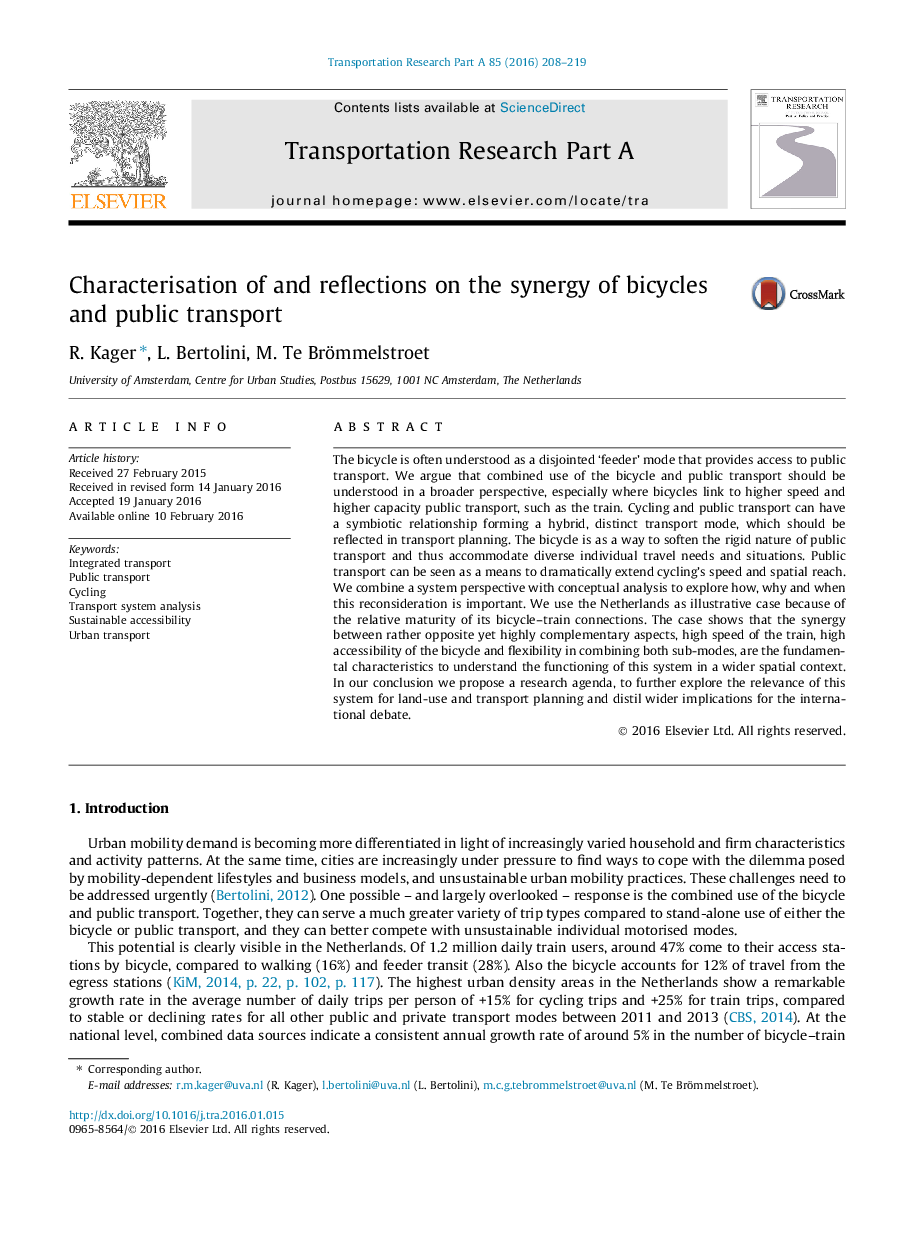| Article ID | Journal | Published Year | Pages | File Type |
|---|---|---|---|---|
| 311133 | Transportation Research Part A: Policy and Practice | 2016 | 12 Pages |
•Cycling and transit can have a symbiotic relationship that needs reconsideration.•Synergy of cycling and transit occurs at trip level and higher, not for trip segments.•Synergy is based on speed and reach of transit, flexibility of bicycle and choice.•Case of Netherlands illustrates synergy and suggests two-way link to urbanisation.•A research agenda is proposed to analyse bike–train at system level.
The bicycle is often understood as a disjointed ‘feeder’ mode that provides access to public transport. We argue that combined use of the bicycle and public transport should be understood in a broader perspective, especially where bicycles link to higher speed and higher capacity public transport, such as the train. Cycling and public transport can have a symbiotic relationship forming a hybrid, distinct transport mode, which should be reflected in transport planning. The bicycle is as a way to soften the rigid nature of public transport and thus accommodate diverse individual travel needs and situations. Public transport can be seen as a means to dramatically extend cycling’s speed and spatial reach. We combine a system perspective with conceptual analysis to explore how, why and when this reconsideration is important. We use the Netherlands as illustrative case because of the relative maturity of its bicycle–train connections. The case shows that the synergy between rather opposite yet highly complementary aspects, high speed of the train, high accessibility of the bicycle and flexibility in combining both sub-modes, are the fundamental characteristics to understand the functioning of this system in a wider spatial context. In our conclusion we propose a research agenda, to further explore the relevance of this system for land-use and transport planning and distil wider implications for the international debate.
